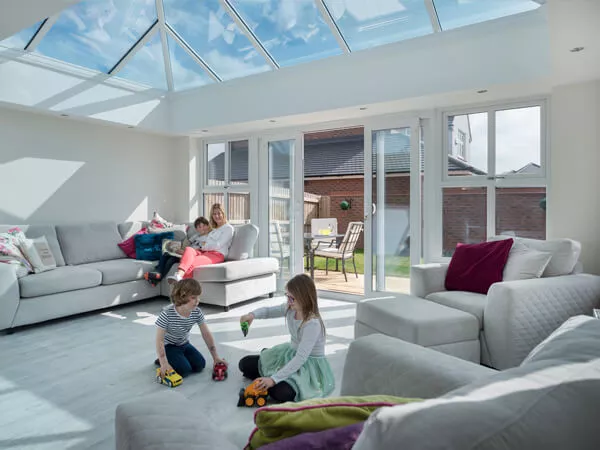On designated land* cladding of any part of the exterior of a dwelling (and extensions/conservatories) with stone, artificial stone, pebble dash, render, timber, plastic or tiles is not permitted development.
On designated land and Sites of Special Scientific Interest the regime for larger single-storey rear extensions (see point 8) does NOT apply.
*Designated land (Article 2(3)) includes national parks and the Broads, Areas of Outstanding Natural Beauty, conservation areas and World Heritage Sites.

On designated land conservatories extending beyond any side wall of the original house are NOT permitted development.
Conservatories (including previous extensions) and other buildings must not exceed 50% of the total area of land around the original house*.
Sheds and other outbuildings must be included when calculating the above 50% limit.
*The term ‘original house’ means the house as it was first built or as it stood on 1 July 1948 (if it was built before that date). Although you may not have built an extension to the house, a previous owner may have done so.
Conservatories forward of the principal elevation or side elevation of the original house and fronting a highway are NOT permitted development.
Side conservatory must not have a width greater than half the width of the original house.
Side conservatories to be single storey with a maximum height of four metres.
If conservatory (at side or rear) is within two metres of a boundary maximum eaves height should be no higher than three metres to be permitted development.
Single-storey rear extensions must not extend beyond the rear wall of the original house* by more than four metres if a detached house; or more than three metres for any other house.
Where not in designated land (Article 2(3))* or a Site of Special Scientific Interest, this limit is increased to eight metres if a detached house; or six metres for any other house.
Single-storey rear conservatory must not exceed a height of four metres.
Maximum eaves height should be no higher than the eaves of the existing house. The highest part of the conservatory should be no higher than the roof ridge line of the existing house.

IMPORTANT NOTE: The permitted development allowances described here apply to houses, not flats, maisonettes or other buildings. You should check with your Local Planning Authority whether permitted development rights apply – they may have been removed by what are known as Article 4 directions. Other consents may be required if your house is listed or in a designated area.
When planning work you should read all the advice on the Planning Portal under ‘Your responsibilities – Other considerations before you start work’.
As well as other important information you will find guidance here on the permitted development regime.
Wales: This guidance relates to the planning regime for England. Policy in Wales may differ. Contact your local planning authority for further information.
Building Regulations: Conservatories are normally exempt from building regulations provided they meet a number of conditions. For more information read Planning Portal online guidance.
Installation, alteration or replacement of a chimney, flue or soil and vent pipe: Read guidance on the permitted development regime under Class G.
Disclaimer: Users should note that this is an introductory guide and is not a definitive source of legal information. Read the full disclaimer.
Definitions of terms used in this guide:
‘Original house’ – The term ‘original house’ means the house as it was first built or as it stood on 1 July 1948 (if it was built before that date). Although you may not have built an extension to the house, a previous owner may have done so.
‘Designated land’ (Article 2(3)) – includes national parks and the Broads, Areas of Outstanding Natural Beauty, conservation areas and World Heritage Sites.
REQUEST YOUR FREE QUOTE
Simply fill in your details for your free, no obligation quotation, and click "Get Quote"


